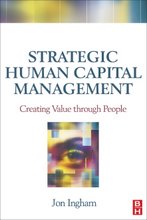Note that I'm not suggesting it's all science, just that it's probably more art, and I'm concerned that others are exaggerating the science perspective leaving art far behind. So I'm really just trying to rebalance the commentary around science and ensure art gets a look-in too.
One of the ways I'm trying to do this is through the Art of HR global conference taking place in Dubrovnik, Croatia, from 13 to 16 November 2014.
And I'm also trying to stimulate some conversation about what we mean by HR's artful role in this Linkedin group which I'd encourage you to join if you're interested.
One perspective on art and science I'd like to share was developed at my US colleagues at Buck / ACS (now Xerox) whilst I was working there as Director for Human Capital Consulting for Europe part-time seven or eight years ago. Using house building as a metaphor we suggested:
Art represents the architect or the interior designer. In terms of your change man- agement team, this is a person, typically very well connected throughout the organization, who gathers feedback, asks “why” and is outstanding at motivating peo- ple to do things, because of his or her relationships.
Scientists are the drivers of the change, while artists are the navigators who cycle in and out, asking the questions that keep things on track. They’re the people who make sure that everyone isn’t so intent on the destination that no one realizes the car is out of gas."
"The science side is the tactical side, driven by outstanding time managers who are detail-, schedule- and task-oriented. The art side ensures that perspective and feedback get back into the system so that the outcome works for the company and accomplishes the ultimate goal."
Then the bit I really liked looked at how art and science need to link together but with one or the other leading at different stages in a project:
If all you're doing is science, you're missing out on a large piece, and potentially the most important aspects, of any change or HR project.
If you've got any other thoughts, please do join the Linkedin group and if you can, come along to the Dubrovnik conference in November.
Also see: Thoughts on the Art of HR
- Consulting - Research - Speaking - Training - Writing
- Strategy - Talent - Engagement - Change and OD
- Contact me to create more value for your business
- jon [dot] ingham [at] strategic [dash] hcm [dot] com





















 There are some nice links in the programme at the Miiddle East HR Summit. So after
There are some nice links in the programme at the Miiddle East HR Summit. So after 








 I was in South Africa for a few meetings and a workshop on HR and social media last week. It’s been a while since I’ve been to southern Africa but it was good to be back – particularly as this meant missing the news that the UK is possibly already back in recession and the announcement that austerity cuts are going to be deepened and lengthened, as well as the public sector strikes during the week (Jeremy Clarkson’s comments on the strikers were still well reported however).
I was in South Africa for a few meetings and a workshop on HR and social media last week. It’s been a while since I’ve been to southern Africa but it was good to be back – particularly as this meant missing the news that the UK is possibly already back in recession and the announcement that austerity cuts are going to be deepened and lengthened, as well as the public sector strikes during the week (Jeremy Clarkson’s comments on the strikers were still well reported however).
 I may not often comment on other peoples’ blogs, but I do read a lot of them. My favourite post last week was
I may not often comment on other peoples’ blogs, but I do read a lot of them. My favourite post last week was 
 HRevolution has finished (sort-of, though there are some HRevolution sessions taking place on Wednesday) so it’s time for the main event: Bill Kutik’s HR Technology conference:
HRevolution has finished (sort-of, though there are some HRevolution sessions taking place on Wednesday) so it’s time for the main event: Bill Kutik’s HR Technology conference: 




 As someone who focuses on helping organisations develop more innovative people management and organisation development strategies, I’m interested in this statement from the CIPD:
As someone who focuses on helping organisations develop more innovative people management and organisation development strategies, I’m interested in this statement from the CIPD:

 No real surprise that HCL Technologies won this year’s Asian Human Capital Award. CEO Vineet Nayar always speaks a lot of not-so-common sense and I’ve been looking forward to the awards session since Vineet let the cat out of the bag by
No real surprise that HCL Technologies won this year’s Asian Human Capital Award. CEO Vineet Nayar always speaks a lot of not-so-common sense and I’ve been looking forward to the awards session since Vineet let the cat out of the bag by 


 I’m going to be delivering this session on HR and social media in Malaysia on 26th and 27th September.
I’m going to be delivering this session on HR and social media in Malaysia on 26th and 27th September.











